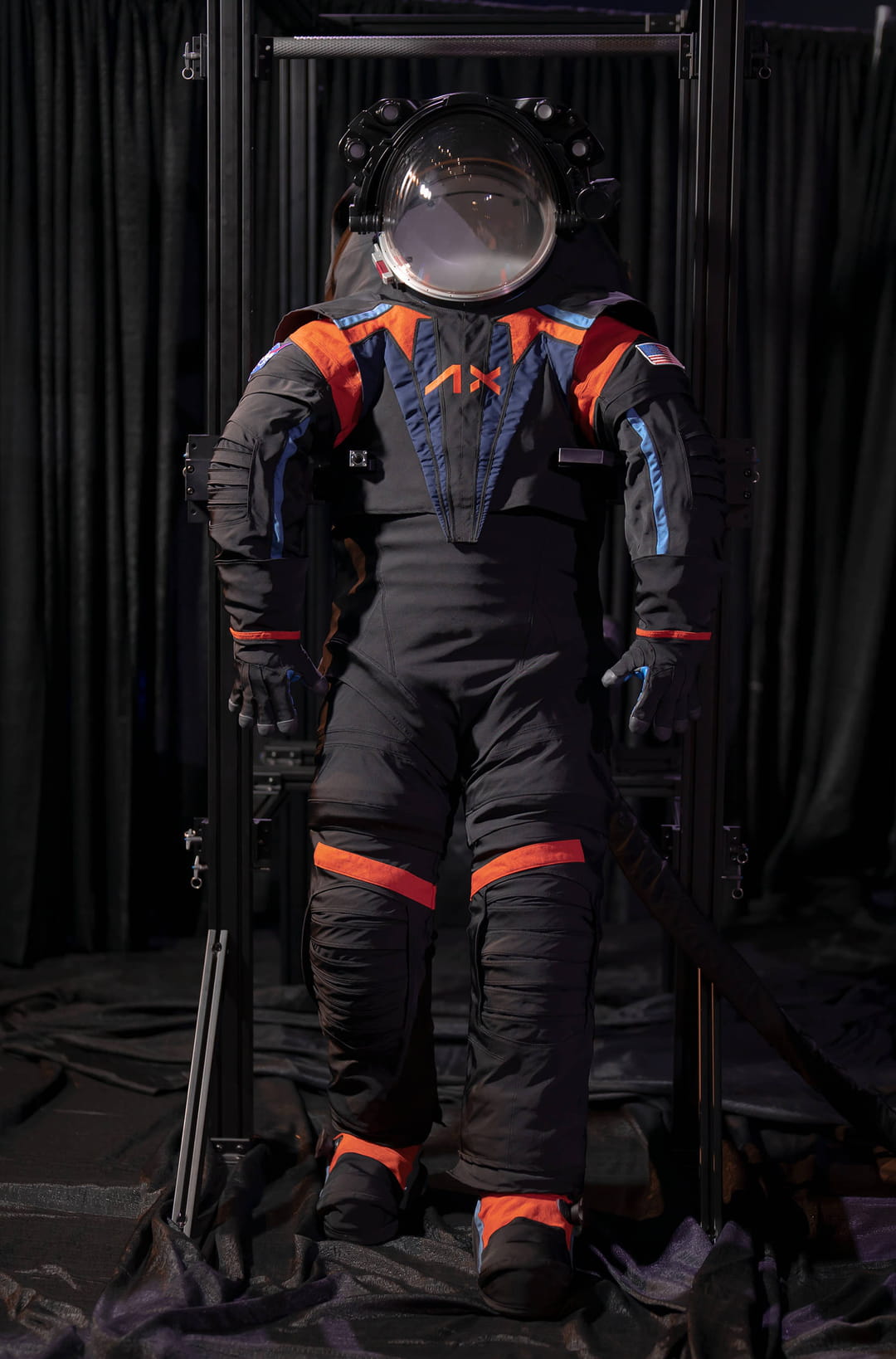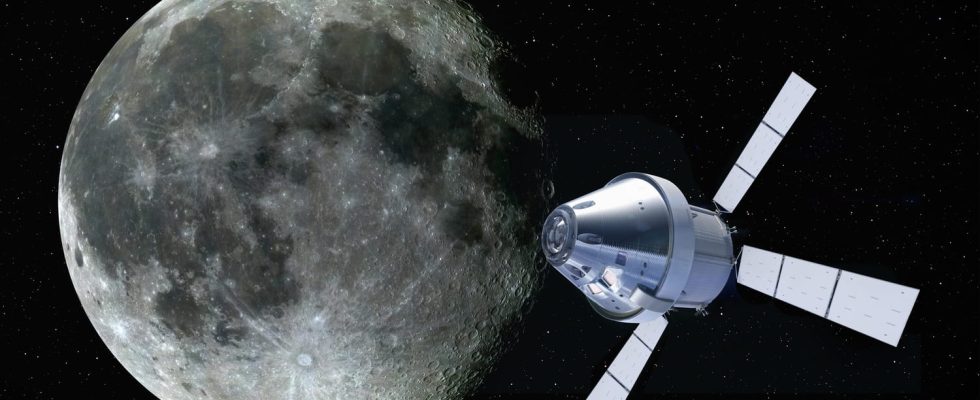ARTEMIS. This Monday, April 3, NASA unveiled the crew of the Artemis 2 mission. Americans Christina Koch, Victor Glover and Gregory Wiseman as well as Canadian Jeremy Hansen will fly to the Moon in November 2024.
[Mis à jour le 3 avril 2023 à 19h38] We now know the names of the four astronauts who will have the privilege of taking part in the Artemis 2 mission. NASA this April 3, 2023, the crew is made up of three American astronauts and one Canadian astronaut, as previously announced by the American Space Agency. The captain will be Reid Wiseman, an American astronaut. The pilot will be Jeremy Hansen, the only Canadian astronaut on the mission. Christina Koch and Victor Glover, both Americans, will complete this crew.
Scheduled for the month of November 2024, the Artemis 2 mission should take astronauts to the Moon, without setting foot on our natural satellite. The spacecraft will orbit the Moon and the crew will return home after ten days in space. It is NASA’s SLS rocket, the most powerful launch vehicle currently available, which will allow them to fly towards the Moon aboard the Orion capsule of SpaceX. The Artemis 2 mission is a dress rehearsal for the great return of humans to lunar soil scheduled for the end of 2025.
Currently scheduled for November 2024, the continuation of the Artemis program, the Artemis 2 mission, will send a crew of four astronauts around the Moon. Again, no landing planned on our satellite since the mission is to reach an orbit around the Moon and then return to Earth using the Orion module. This is the first manned mission of the Artemis program and constitutes the final phase of testing the various systems of the module before the third stage of the program.
The composition of the crew that will participate in the Artemis 2 mission is now official. The lucky winners were thus selected by the American Space Agency from a cohort of 41 active astronauts to take part in this space flight which marks the last stage before Man’s return to the Moon. On board the Orion capsule, we will therefore find:
- Christina Hammock Koch, a Michigan-born American astronaut. Aged 44, she trained in electrical and physical engineering. A research engineer, she spent a year in Antarctica on the American Adminsen-Scott base. She also stayed on the International Space Station between March and July 2019.
- Gregory Reid Wiseman, a 47-year-old American astronaut. He was first a pilot in the US Navy before becoming head of the astronaut office at NASA. Between May and November 2014, he spent six months on the ISS as a flight engineer. He will be the captain of the Artemis 2 mission.
- Victor Jerome Glover, a 46-year-old American astronaut who trained as an engineer before joining the United State Navy as a pilot. He became an astronaut in 2013 and spent six months aboard the ISS between November 2020 and May 2021. Victor Glover will serve as pilot of the Artemis 2 mission.
- Jeremy Roger Hansen, the only non-American astronaut on the Artemis 2 mission. A 47-year-old Canadian national, his selection as a NASA astronaut dates back to 2009. He has also been a fighter pilot since 2003 and has a master’s degree in physics. In 2017, he became the first Canadian to train astronauts for NASA.
When and where will Artemis 2 launch?
According to a March 2023 US Space Agency announcement, the Artemis 2 mission is scheduled to launch in November 2024. The crew will blast off aboard an SLS rocket from NASA’s Kennedy Space Center located in Florida. The return of the Orion capsule should take place ten days later in the Pacific Ocean.
What is the duration and course of the manned flight of Artemis 2?
The flight of Artemis 2 should resemble that of Artemis 1 except that this time the Orion capsule will carry four astronauts. This mission will consist of a launch phase during which the rocket will launch and its various parts will separate. Then, the Orion service module will propel the capsule into orbit around the Moon. Once this lunar flyby has been completed, the crew will head to Earth and should be picked up in the Pacific Ocean upon arrival. This mission should last ten days.
What is NASA’s Artemis program?
50 years after the last step of Man on the Moon, the Artemis program, orchestrated by NASA in collaboration with the European, Canadian and Japanese space agencies, is preparing to repeat the feat. But if this program plans to set foot again on our natural satellite, the Moon, its ambitions are greater. The Artemis program is the first step towards a more distant goal: the planet Mars. Artemis currently comprises three phases which should lead to the return of man to the Moon in 2025. The stay of the astronauts on the lunar soil should last 6.5 days and the crew will consist of four individuals including a woman and a person of color, announced the NASA.
The major advance that distinguishes this new lunar program from the Apollo missions of the 1960s and 1970s is the design of a permanent lunar station. Called “Lunar Gateway”, this structure located in orbit around the Moon is one of the major challenges of this new program. Indeed, this space station represents a stopover and a real laboratory for lunar exploration but also an advanced base for future missions to the planet Mars.
When is it planned to send men to the Moon?
The next mission that plans to send astronauts to the Moon, Artemis 2, is scheduled for November 2024, more than a year later than originally planned. This flight would be similar to Artemis I but will include astronauts on board, in what would be the first crewed mission to the Moon since the Apollo program. Landing with humans would take place in 2025 with Artemis 3, but NASA officials said the timing would depend on the success of previous test flights.
In an interview with France Info, French astronaut Thomas Pesquet has revealed that he is a candidate for one of the next manned flights of the Artemis program. “From Artemis III, Europe will have a say in the matter thanks to our contribution to the Orion capsule. We will then have flights for European astronauts”. But “I am not the only one, we are some to apply for missions to the Moon (…) This means that there will be several European astronauts who will tread the lunar soil in the next decades “.
The Axiom Space company presented on Wednesday March 15, 2023 the prototype spacesuit developed for the Artemis 3 lunar mission which should take place in 2025. Designed to allow astronauts to move on the Moon, this outfit is called Axiom Extravehicular Mobility Unit. A real technical challenge, this suit must both ensure the safety of the astronaut while allowing him to move with precision. Completely hermetic, flexible but also very resistant, this suit constitutes a real individual spaceship since it will protect its wearer from the extreme temperatures to which it will be exposed, from dust but also from the absence of lunar atmosphere.
These new NASA suits are inspired by those worn by Apollo program astronauts in the 1970s. However, these new versions offer greater mobility to astronauts than those of the last century. If the prototype presented during the demonstration is black, the final version will sport the eternal white color which makes it possible to reflect the rays of the sun and thus protect its wearer from extreme temperatures.

Spacesuits are particularly complex to develop because they meet multiple criteria. They must at the same time be extremely resistant to wear, hermetic, but also comfortable to wear since the astronauts must carry out a certain number of manipulations during their extravehicular outings. In addition, the new Axiom Space suits have several systems for temperature regulation, breathing gas management as well as a communication device. The suit is also equipped with front lights and a high resolution camera.
These new generation diving suits are very innovative, we note among other things that the joints allow a greater range of motion to walk or bend the knees more easily All in order to perform more precise geological and scientific tasks. pic.twitter.com/g1VfEAZFaW
— Thomas Pesquet (@Thom_astro) March 15, 2023
